
The World War II Memorial was dedicated in 2004 on Washington, D.C.’s National Mall, honoring the 16 million people who served as part of the U.S. Armed Forces during World War II, including more than 400,000 who died. It’s a spell-binding structure, with a splashing fountain surrounded by concrete pillars and pavilions. And it’s filled with symbolism … and secrets. As we celebrate the 76th anniversary of V-E day on May 8, here are some of the insights revealed—by the numbers.
1 Medallion
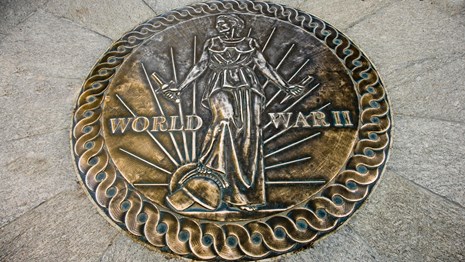
A medallion on the floor of each victory pavilion depicts Nike, the Roman goddess of victory standing on the helmet of Mars, the god of war. It’s the same image depicted on the universal medal earned by each member of the U.S. Armed Forces during World War II.
2 Kilroys
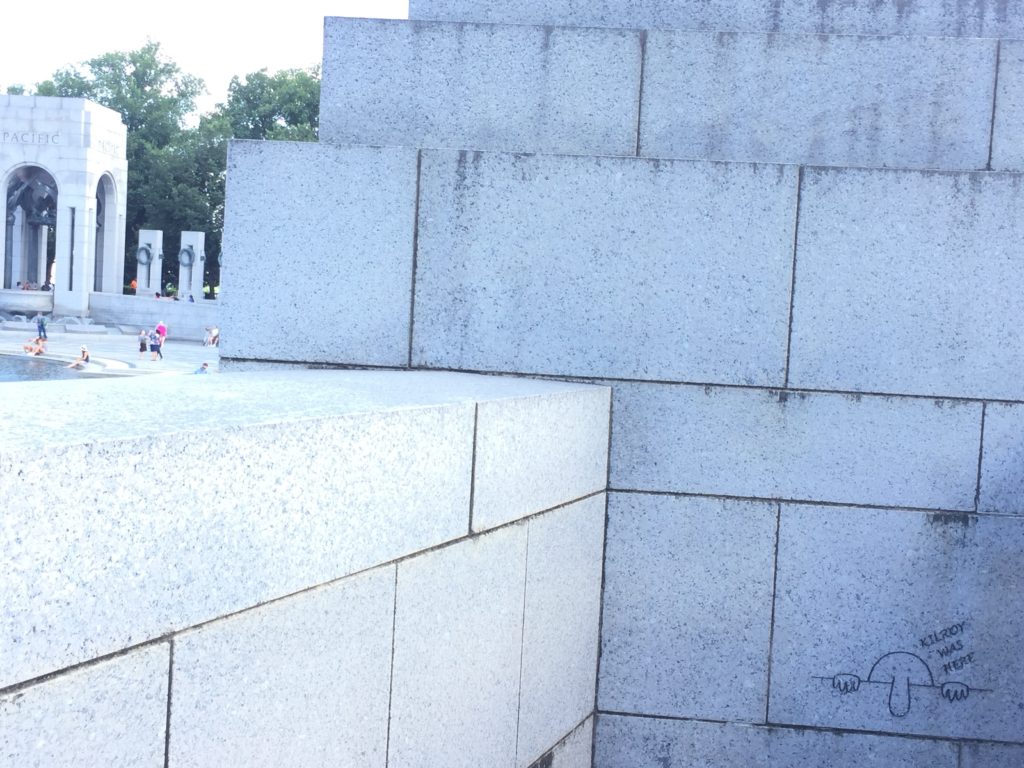
Tucked away in two unassuming nooks you’ll discover two “Kilroy Was Here” cartoons etched into the granite. They recall the chalk and pencil sketches left behind by GIs on military bases and battlefields throughout the world—a reassuring message that someone had been there before and survived. The first Kilroy was created by an American rivet inspector named James Kilroy who signed the interiors of Liberty ships he was helping to build in Richmond, California, indicating parts were done.
2 Victory Pavilions
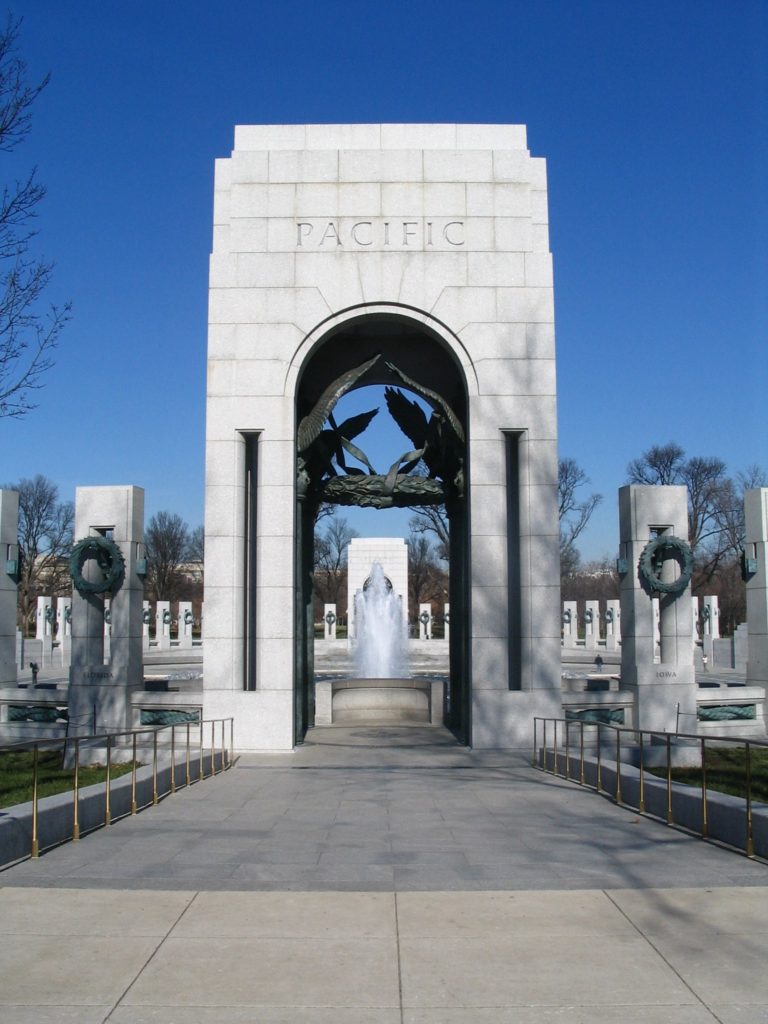
Two facing 43-foot-tall pavilions, serving as entries on the memorial plaza’s north and south sides, represent the Atlantic theater and the Pacific theater—and celebrate the victories of each.
4 Bald Eagles
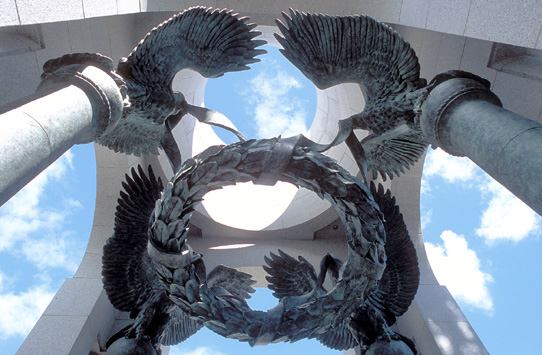
A sculptural canopy (officially called a baldacchino) of four American bald eagles carrying garlands in their beaks, which in turn support a laurel wreath, are found inside each victory pavilion. The eagles, of course, symbolize America, with the laurel symbolizing victory (as first used in ancient Greece)—and all together the entity—baldacchinos and pavilions—represents American victory in the Atlantic and Pacific theaters.
24 Bronze Relief Panels
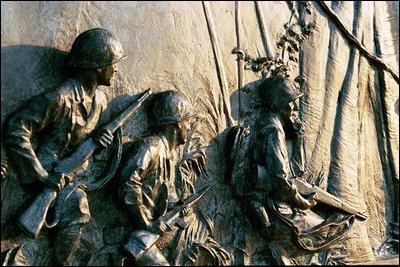
Bronze bas-relief panels—12 on each side as you enter from 17th Street NW—depict scenes from the theaters of war and the homefront. The overall theme is the transformation of America as it plunged into World War II—the mobilization of agricultural, military, industrial, and human resources that worked together to fight for democracy. Many of the scenes are based on photographs.
56 Pillars
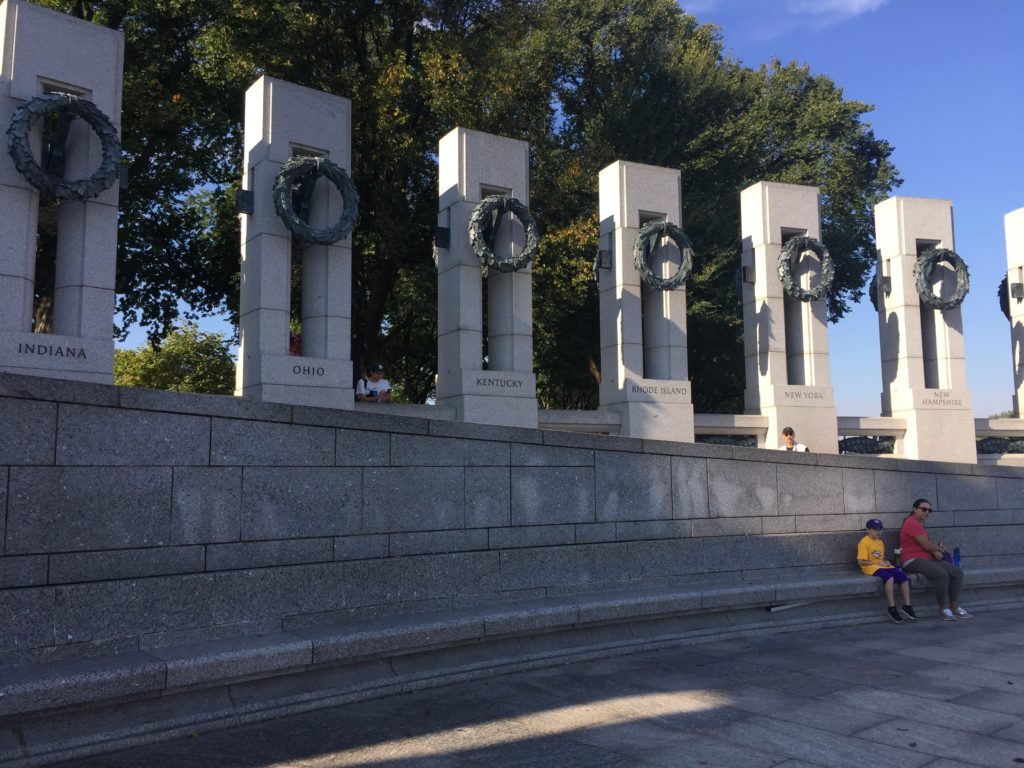
Fifty-six granite pillars arcing around the memorial plaza represent the 56 states, commonwealths, and territories that sent men and women to serve under the U.S. flag. They appear in order of each one’s entry into the Union and alternate side to side, starting with Delaware and Pennsylvania. The columns are hollow to represent the loss of life of each state or territory. A heavy rope binds the states and territories together, representing all coming together at this time of great struggle.
4,048 Gold Stars
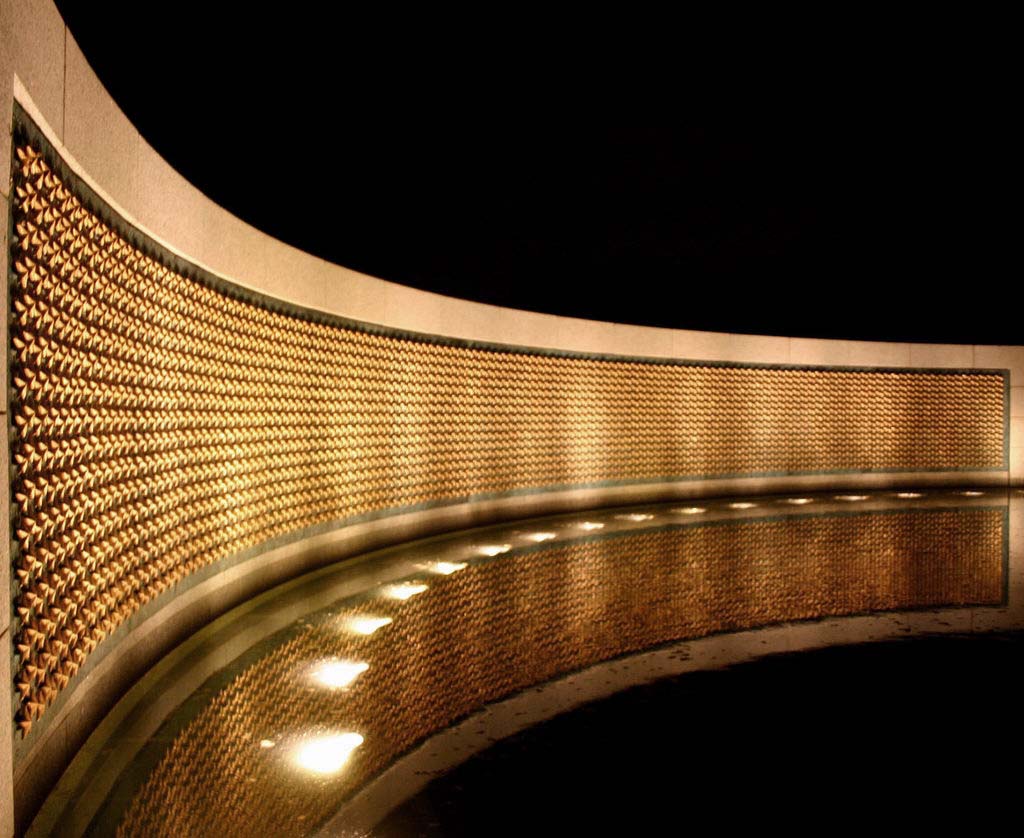
Gold stars on the Freedom Wall take on the tradition of using a gold star to indicate that a family member had lost his or her life in the war. There are 4,048 gold stars with each one representing 100 US service members who perished.
The World War II Memorial is located between 17th and 18th Streets NW, in Washington, D.C., between the Washington Monument and the Lincoln Memorial. It’s open 24/7, with rangers on duty to answer questions between 9:30 a.m. and 10 p.m. daily.
